Cypress: what is it, what does it look like and how to care for it?

Today, many varieties and types of cypress are known. There are differences between them in appearance, as well as in the characteristics of care and cultivation. Paying attention to this plant, as well as observing certain rules for its maintenance, you can get a lush and beautiful representative of the flora at home or in your summer cottage.
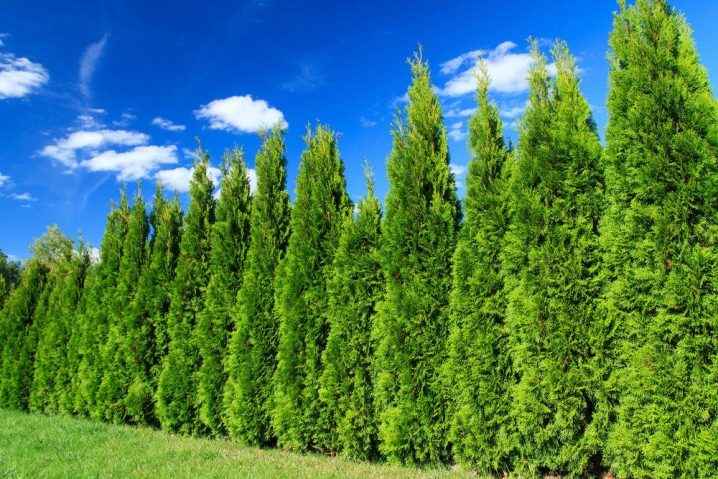
What it is?
Cypress is an evergreen coniferous plant of the Cypress family. The genus has more than 10 species, represented by trees and bushes. In the wild, this plant is quite common. An ornamental tree grows in an area dominated by a tropical and subtropical climate, namely in European, Asian countries, North America. The tree is considered to be long-lived, as it has a lifespan of about 300 years. Under favorable environmental conditions, it lives more. Many plants are characterized by straight trunks and a pyramidal crown, there are other species, the external description of which suggests their similarity to lush and spreading bushes.
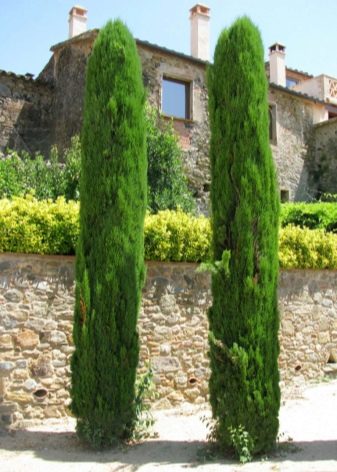
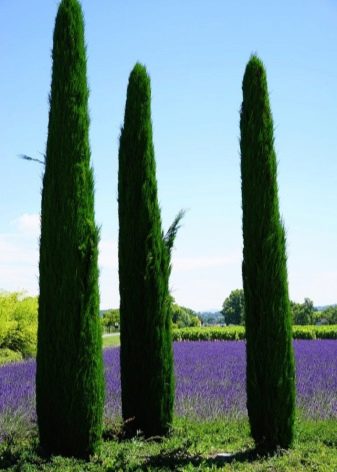
In the natural environment, cypress grows up to 30 meters, but on personal plots you can find trees with no less attractive appearance and with a height of no more than 200 centimeters.
The growth of the skeletal branches of the coniferous representative is directed upwards, while they fit tightly to the trunk. It is this feature that makes the tree slender and beautiful. There are shoots on the branches of the plant, they are characterized by their subtlety and softness. Shoots are characterized by active branching. The foliage of the cypress is fern-like, it has a rich green color. Young representatives have needle-like foliage, but after 4 years of life, it turns into scaly.
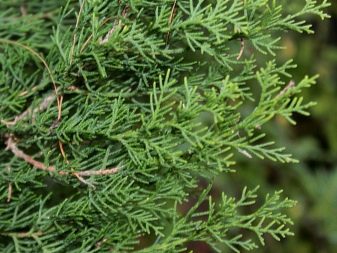

It has been observed that age has a beneficial effect on the decorativeness of the cypress. This tree is gymnosperm, both female and male cones bear fruit. The latter are colored gray-brown and also have a diameter of about 0.35 centimeters. Ripening of cones occurs in the second year of the tree's existence. The cones are covered with scales, under which the seeds are located.
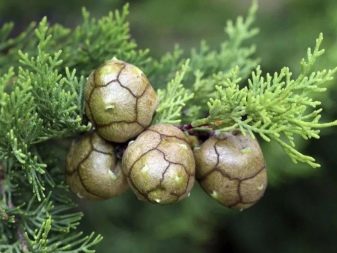

Normal growth and activity of Cypress is possible at home, but with proper attention and care. Some growers attribute it to indoor flowers, as it exudes a lemon-type scent. To grow it at home, you can use not only cultivated varieties, but also wild ones. This plant is considered an excellent air purifier that is able to absorb harmful substances and saturate the indoor air with oxygen and phytoncides.
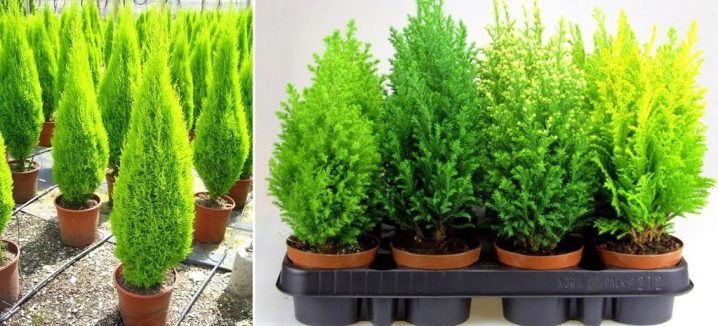
Types and varieties
Currently, flora lovers can grow in their garden, as well as indoors, any of the varieties or species of cypress, of which there are a large number.
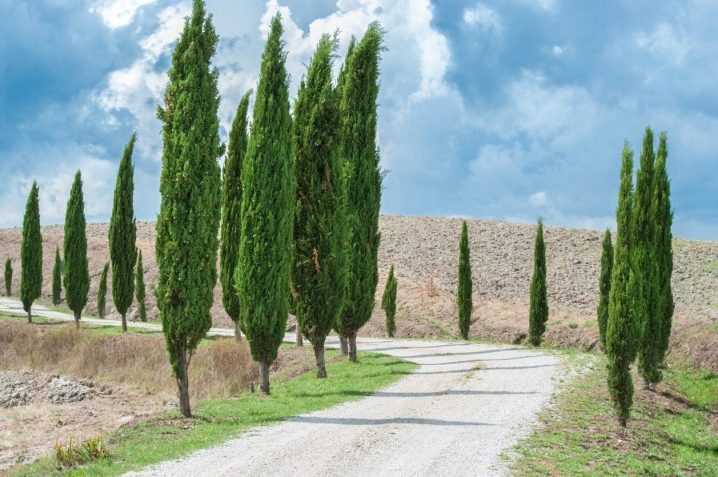
Pyramidal
This species of coniferous plant is native to the Eastern Mediterranean. The pyramidal cypress is also called Italian. The tree is characterized by a wide column-shaped crown and a height of about 35 meters. The plant grows to this size in about 100 years. The original shape of the cypress was obtained thanks to the work of breeders. This long-liver is characterized by good frost resistance, it tolerates frost well at 20 degrees.
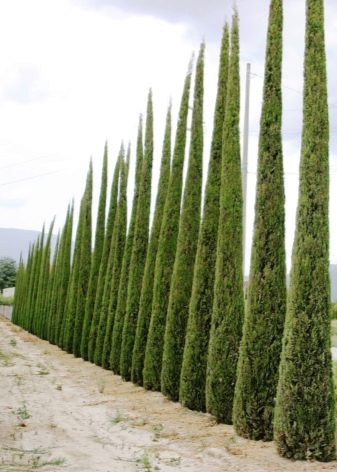
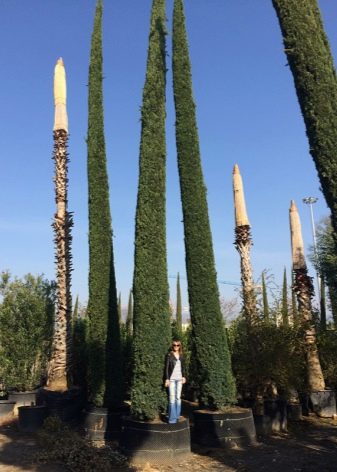
The ideal place for the pyramidal type of life is the hilly area. The plant has a positive attitude towards mountains and poor soils. The tree is covered with small needles, which are painted in emerald color. The formation of cones occurs on small branches that are colored brown. The growth of a young individual is quicker than that of an adult. After reaching 100 years of age, the pyramidal cypress tree stops growing. This plant is an excellent decoration for country houses, alleys, park areas.
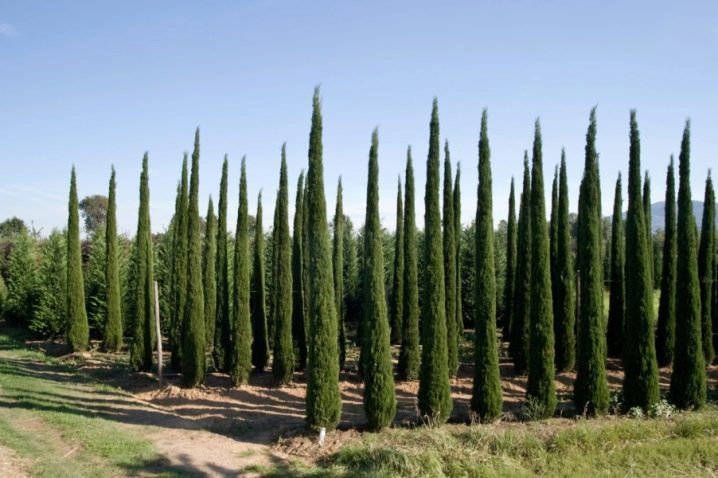
Arizona
The Arizona cypress tree species lives in Mexico, Arizona. A representative that lives in its natural environment grows on mountain slopes. Even 20 years ago, this beautiful plant began to be grown in personal plots, in parks and gardens. The representatives of this family are characterized by a long life span, which in some cases reaches 500 years. During this time, the tree grows up to 2000 centimeters. The bark of this species is gray, but turns brown over time. Arizona cypress wood is similar to walnut, it has high hardness and low weight. The tree can tolerate drought, frost, while growing quite quickly.
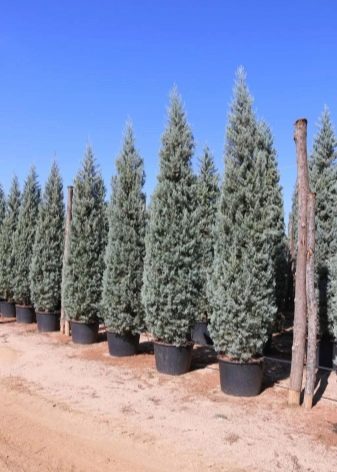
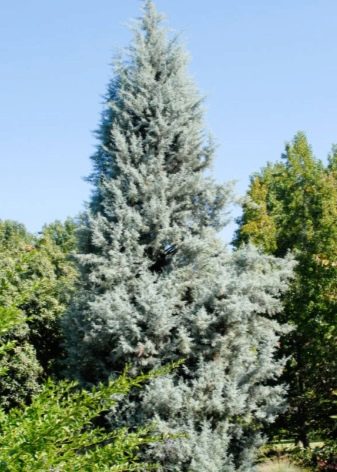
Evergreen
Evergreen cypress is also called ordinary, the shape of this tree resembles a pyramid. The narrow crown of the plant is formed by branches of short length, they fit tightly to the trunk. The common cypress is cone-shaped and can grow up to 3,000 centimeters. The needles are small, elongated, scaly, it is tightly pressed against the branches in a cruciform manner. Cones hang from short shoots, they are characterized by a diameter of 30 mm.


This type of plant is characterized by rapid growth. Lovers of green spaces can also come across an ordinary cypress with red needles. He prefers shaded areas and survives in temperatures of minus 20 degrees. The tree is not demanding on the soil, and the possible presence of stones in the soil will not interfere with its growth.
Excessive moisture has a detrimental effect on the tree. This representative of the flora is a long-liver, it begins to give cones at the age of 5 years. This type of cypress is cut for decorative purposes. Neatly trimmed trees serve as an excellent decoration for the territory.
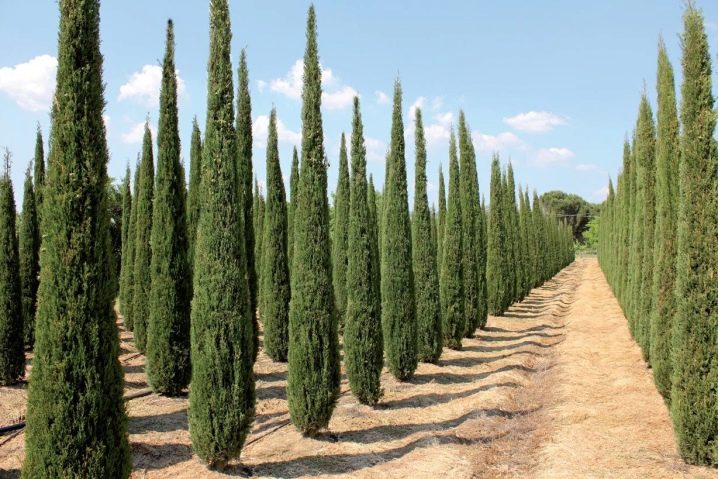
Citric
Lemon cypress is a houseplant, it has a pleasant pine-lemon aroma and an elongated shape. The flower is quite beautiful, but whimsical. The needles of an ornamental plant are colored light green. The plant is characterized by drought resistance, unpretentious attitude to the soil. Lemon cypress grows slowly, but lives a long time.
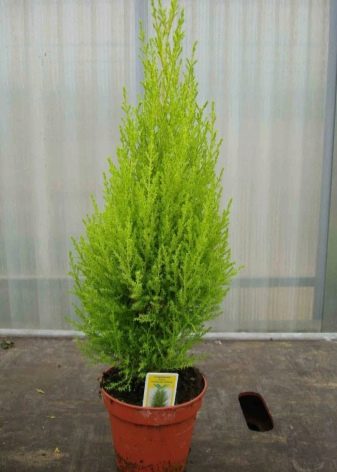
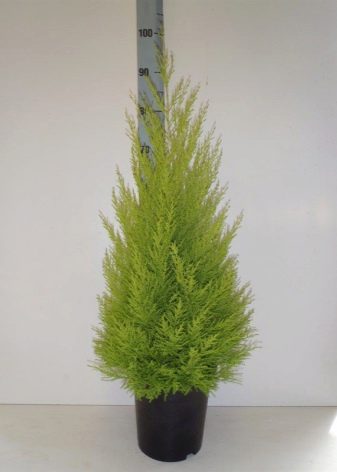
Dwarf
Dwarf cypress is a tree with a pyramidal crown, it is quite similar to thuja. The bark of the tree is brownish brown, covered with scales and cracks. Branches can be either drooping or outstretched. The shoots of the plant are flattened. The needles of a dwarf cypress are opposite and are located crosswise. Young individuals are covered with needle-shaped needles. Male cones are oval and small in size, while female cones are round and covered with scales.
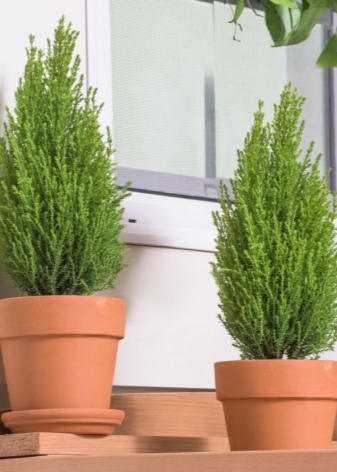

Goldcrest Wilma
This evergreen variety survives better than others at home. It looks like a miniature herringbone, which is covered with narrow leaves. The color of the shoots is light green, sometimes even yellow. The small, scaly leaves give off a lemon scent. This flower is popular in apartments, office premises due to its attractive appearance and unpretentiousness. Goldcrest Wilma prefers diffuse illumination, which can lead to shedding of needles. A favorable temperature for a plant is considered moderate, if it exceeds 27 degrees, then the plant dries. To make the crown of a cypress tree look well-groomed, it should be pruned, this process stimulates the growth of new branches.
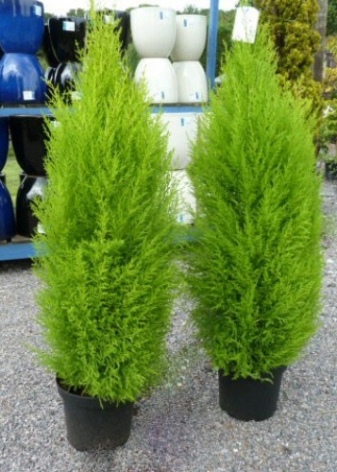
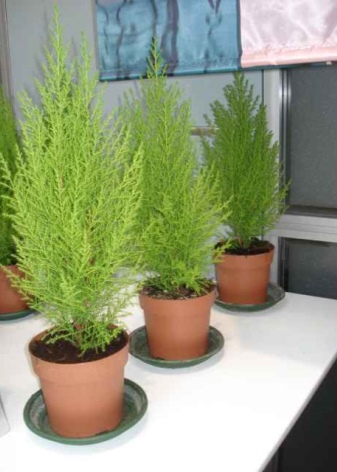
How to care for a tree?
The cultivation of cypress implies the correctness of the procedures associated with caring for it.Since this is a subtropical plant, it should be found in a warm, bright place without direct sun exposure. The tree prefers a large growing area. In the summer period of the year, room temperature is considered optimal for an evergreen representative, but at the same time with constant and optimal moisture. In winter, the cypress should be rearranged in a room with a temperature of 5-10 degrees above zero.
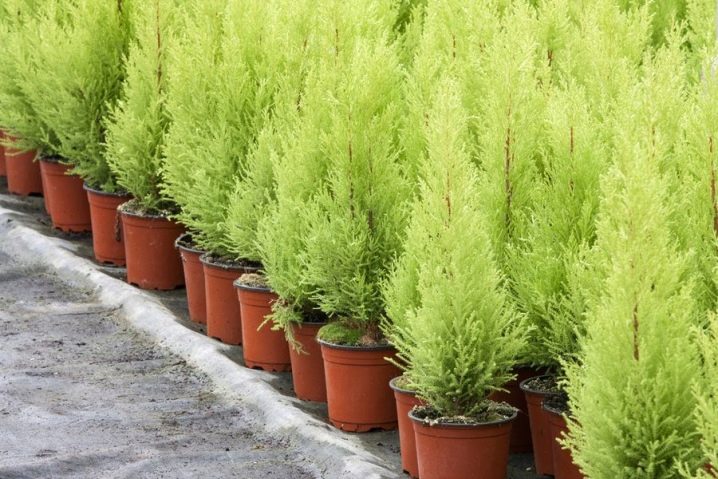
The number of waterings in winter should be reduced, however, it should not be brought to dryness of the soil. In summer, cypress should be placed on windows that are directed to the north or east, and in winter - to the south. In the room where the tree grows, there should be a sufficient beat of sunlight, direct rays should be excluded. In winter, with a lack of natural light, it is worth using artificial.
In the irrigation of cypress, regularity and abundance should be observed. But do not violate the moderation of this process, since an excessive amount of moisture or a lack of it can destroy the plant. It is worth spraying a coniferous representative in the morning and also in the evening. During the procedure, settled water at room temperature should be used. In the cold season, it is often not required to water the plant, it needs to be irrigated once every 7 days, and spraying should be completely canceled before the onset of heat.
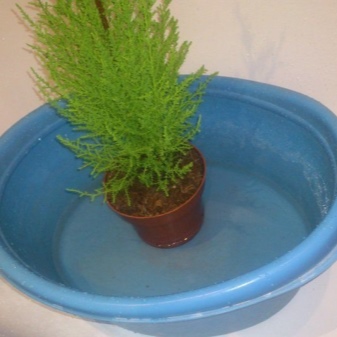

Cypress trees prefer high humidity. Indoors, the humidity level must be maintained by watering and spraying. The land for planting an evergreen tree should be characterized by looseness. The substrate can be purchased in stores or prepared with your own hands. To make the soil, it is necessary to mix river sand, turf soil, peat in equal amounts and 2 parts of leafy soil.

This coniferous representative of the flora is exotic, so ordinary fertilizers are not suitable for it, and humus is considered harmful. The ideal feeding option in this case is considered to be a liquid fertilizer with minerals, which is intended for conifers. It is worth feeding cypress once in May, June, July and August. It is worth making sure that there is not a lot of nitrogen in the fertilizer and that magnesium is always present.
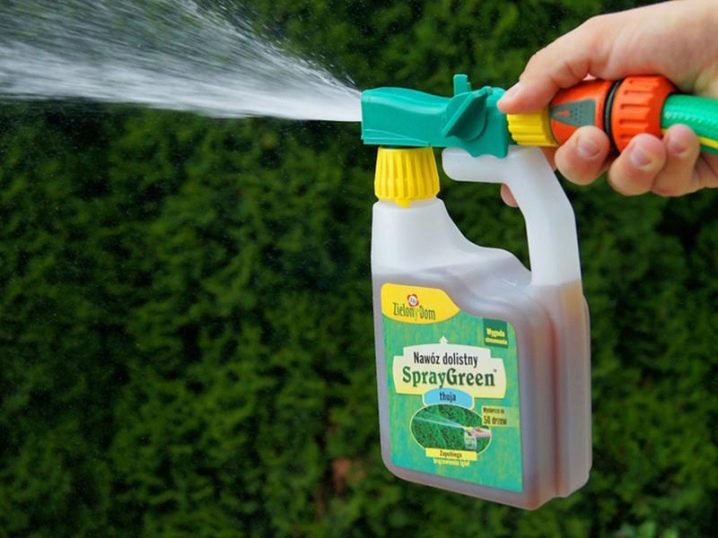
How to transplant it?
The loss of the useful qualities of the soil mixture under the cypress occurs within a few years after planting, therefore, for the normal life of the plant, it should be transplanted into a new substrate. The same procedure is required after purchasing a living decorative decoration for the house. Spring is considered the best time to work. Due to the fact that the cypress has a sensitive root system, it is better to transplant it by transshipment.
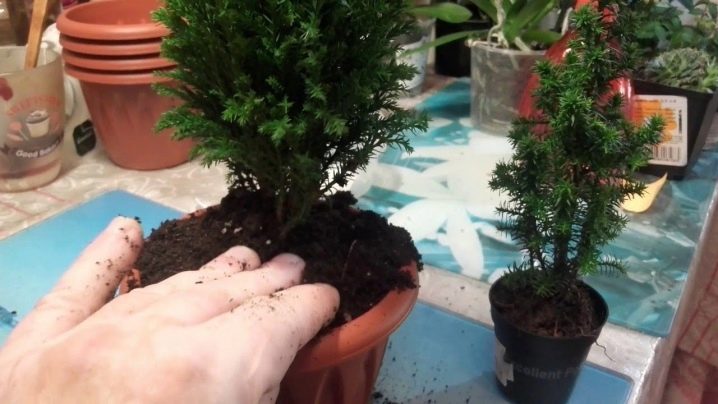
The first step is to thoroughly water the soil, since the plant is easier to extract from wet soil. The cypress must be removed from the pot along with a lump of earth. The substrate that crumbles easily must be removed, and the roots should be examined for damage. If a young shoot is found, then it is separated from the base of the trunk in conjunction with the root system. The place of separation should be lubricated with a garden varnish.

Next, you need to plant each of the plants in separate containers, an adult cypress in a large pot, and a young one in a smaller one. In this case, the young plant should be covered with a glass jar, which will contribute to better rooting. Do not forget that the bottom of the container should be covered with drainage, already on top of which soil is poured.
Diseases and pests
In most cases, cypress is attacked by a pest such as a scale insect, it sucks the juices from the foliage of the plant, which makes it dry. You can also find a spider mite on it, the cause of which is insufficient humidity in the room. Both parasites die when spraying a coniferous tree with Actellik solution. It is worth diluting 2 ml of substance per 1000 ml of water. If the pests do not disappear completely, then the spraying procedure should be repeated after 7 days.
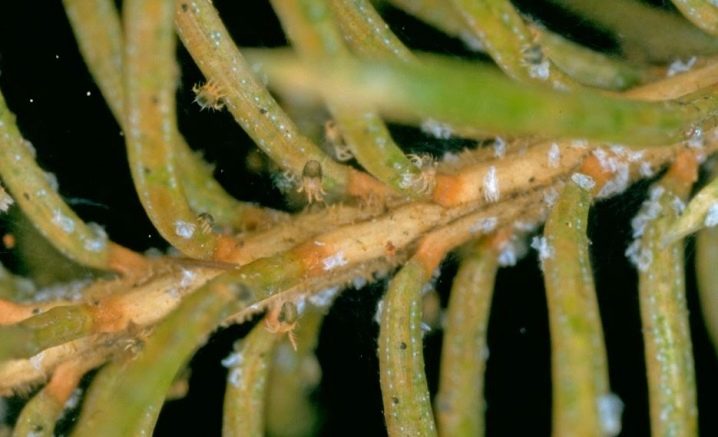
Cypress diseases are most often the result of improper plant care. Chronic waterlogging of the soil causes root rot. If signs of the disease are noticed, then the coniferous tree should immediately be transplanted into a new substrate, after eliminating the remnants of rotten particles. In case of transplantation and prevention of re-disease, the pot must be equipped with high-quality drainage. Cypress dries for the following reasons:
- high dryness of indoor air;
- insufficient soil moisture;
- watering the cypress with poor quality water;
- bad light;
- low ambient temperature.

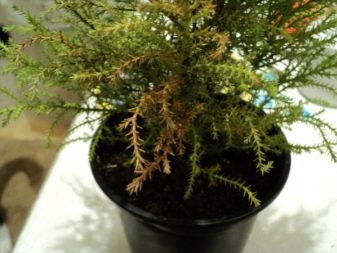
There are situations when the foliage of an ornamental plant begins to turn yellow. This may indicate a lack of nutrients. Therefore, flower growers should not violate the rules for fertilizing trees. People who decide to acquire such an unusual ornamental plant can adhere to the following tips:
- keep an earthen lump in a pot with a plant constantly moist;
- do not put the tree in direct sunlight;
- spray the cypress daily, water it regularly;
- cut off dried areas of a representative of the flora to live buds;
- pruning cypress, thereby giving it an originality of shape and promoting rapid recovery and growth.

Cypresses are quite popular plants, they can often be found in the garden, park area, as well as residential buildings. The reason for this popularity lies in the noble appearance of the tree, as well as its unpretentiousness when growing.
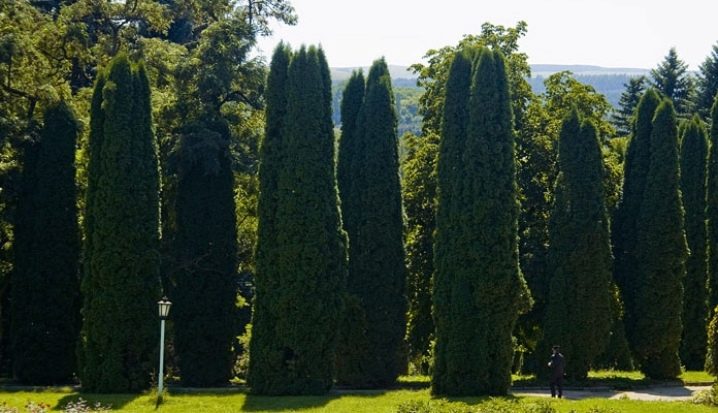
With the help of such a plant, you can decorate a veranda, porch, gazebo, room in the house. An adult coniferous tree is often used as an alternative to the Christmas tree.
For information on how to care for cypress at home, see the next video.




























































The comment was sent successfully.